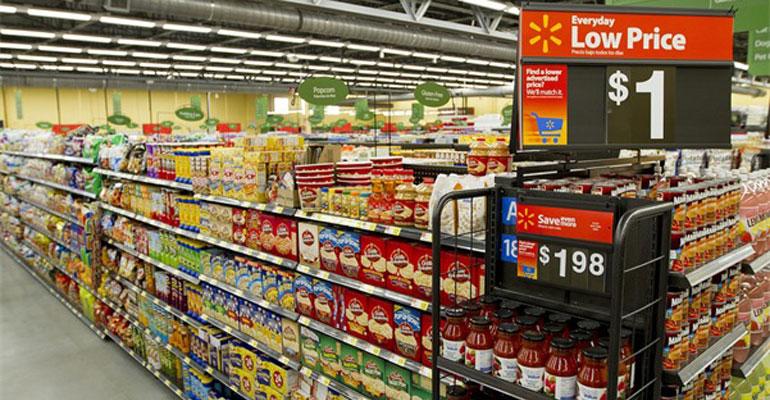Editor’s note: This article does not necessarily reflect the opinions of the editors or management at Supermarket News.
Americans today spend more on groceries than at any other time in U.S. history but are no longer shopping exclusively at their traditional neighborhood supermarket, instead favoring three or four different outlets. To fully understand the actual reasons behind this trend — and to provide supermarkets with a path back into the hearts and minds of American households — let’s debunk the myth with some key facts.
Myth: To win customers back, supermarkets must immediately focus on building the same digitally enabled capabilities — such as curbside pickup and same-day delivery — for which retailers like Walmart, Amazon and Kroger are grabbing headlines.
In an attempt to be more competitive and appeal to customers, supermarkets are feeling pressure to copy giants like Walmart and Amazon without understanding the actual reasons why their own customer base is eroding at the same time Walmart’s is growing. This mindset is understandable when considering Walmart’s Q3 earnings announcement heralding its grocery successes, including nearly doubling the number of its stores offering online grocery pickup to more than 2,100 locations, with about 700 pickup towers in place by the end of the year. Amazon’s entry into the space with Whole Foods signaled another wakeup call for the entire industry. As e-commerce has already conquered market categories such as electronics, apparel and health and beauty, it seems inevitable that grocery shopping, representing the last great, untapped retail sector, will “go digital” everywhere.
Truth: What is being overlooked by supermarkets is that Walmart and others can offer these services because they’ve already won the consumer perceived price image war.
Walmart’s legendary EDLP value proposition has led to grocery driving over 55% of their $500 billion in revenue last year. Aldi and Lidl have dominated Europe with their discounting strategy, and now have their sights set on the American household. Amazon has successfully disrupted industries by using scale and price image, and is now instilling its Prime model into Whole Foods.
Solution: While supermarkets will eventually need to invest significantly in digital services, the return on this investment is in danger of falling flat because Americans are primarily price driven, and they see Walmart — not supermarkets — as providing great value.
So, with the hard truth revealed, what’s the solution? If it’s all about first competing with Walmart on price image, how can supermarkets implement price increases without damaging their bottom line? It’s all about taking foundational steps along three core principles:
• Know your role: Consumer price perception is the “reality” supermarkets must address. Be surgical and competitive with pricing only where and when it’s necessary. Identify the crucial 3% to 5% of SKUs across the entire assortment that drive consumer price perception and represent the majority share of revenue. To reiterate, supermarkets do not need to take a uniform price down across their entire assortment, just where it matters. Define roles based on those that are high-price image drivers versus those that are margin builders across all categories.
• Follow the rules: Knowing the roles is only as good as the pricing rules that are tied to them. Supermarkets need to compete with Walmart but don’t want to start price wars. Supermarkets can recoup investments on the 3-5% of the assortment to which price cuts are made by taking price on others without causing sticker shock. Additionally, supermarkets need to consider the role of store brands, seasonality, margin hurdles, MAP (minimum advertised price) implications from suppliers and other factors before implementing a price cut or increase. Develop and follow a playbook of pricing rules that holistically address these inputs and apply the rules based on category roles.
• Get extra credit: Promoting the right products in the right places can both improve price image and allow supermarkets to use those traffic drivers to cross-sell with basket fillers. With the right roles defined in the pricing toolkit, supermarkets can improve their promotions by evaluating promotional opportunities the right way — by taking an honest look through scoring historical performance based on roles, not just “rinsing and repeating” promotions to grab the same lift, and by stopping ineffective promotions that continue to bleed margins.
The threats supermarkets face from online competition are undeniably real, and the need to address them is urgent. Walmart now has 25% of the $800 billion grocery market. Amazon already has 30% of that online grocery market. Experts predict that the growth of online grocery by 2025 will be $100 billion, according to a study by the Food Marketing Institute conducted by Nielsen — all of which is the result of price remaining the primary consideration for customers. Americans are finding it easier and easier to fragment their shopping trip to chase the best price on the same box of cereal. The retail giants that have a head start with customers are now working to protect their lead with fancy e-commerce bells and whistles. So the time is to act now, before Americans cross supermarkets off their grocery list entirely.
Hubert Paul is a Director, Shikha Jain a Senior Director and Ricardo Rubi a Partner at Simon-Kucher North America Consumer and Retail Practice. Contact us at Simon-Kucher & Partners to learn more.





